The Britain Steamship Co. Ltd.
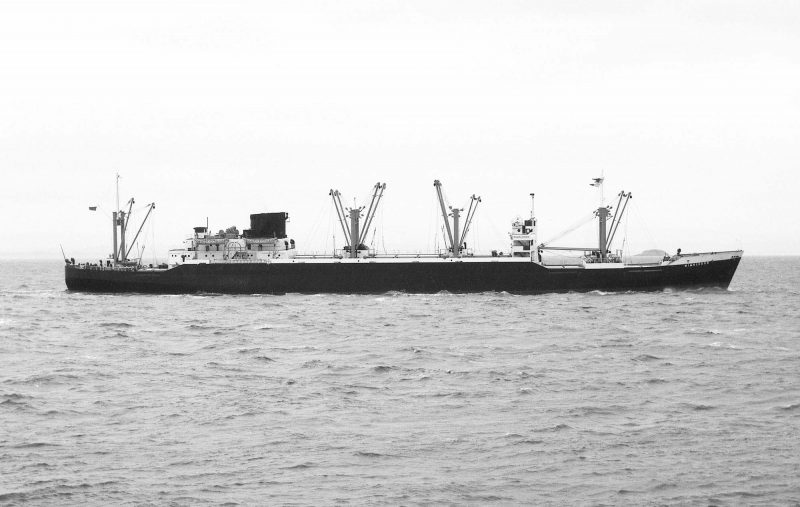
Three generations of the Watts family owned a very large fleet of grey hulled tramps with salmon pink boot topping and dark grey masts and derricks. The Watts family started trading at Blyth in Northumberland in the eighteenth century, and by the 1850s Edmund Hannay Watts was acting as a shipbroker, shipowner and loading agent for sailing ships e.g. Brilliant 204/1839 and Sultan 223/1850 trading to the Continent, Iberia and the Baltic with coal. In 1857, a shipping business was begun under the style of Watts, Milburn & Company, Watts being the senior partner and with the first steamers being Shearwater 682/1864 and Gosforth 833/1866, and the export of coal was naturally a major interest. William Milburn was a butcher by trade and held shares in the ships on the 64ths principle, his later shipping company became one of the four constituent founder companies in 1914 of the Commonwealth and Dominion Line (Port Line from 1937).
A London office was opened in 1869 with Watts moving to London to take control of the business. Two steamers with the same name, Surbiton 965/1869 and Surbiton 1,373/1877, were the first in the fleet to be named after a London suburb. The first Surbiton was lost with all hands on 3rd December 1873, and the second Surbiton sailed from New York on 18th February 1879 and disappeared in the North Atlantic. Coal cargoes were found for the fleet by the simple but drastic method of taking over many North East collieries by a company founded in 1872 by Edmund H. Watts as Watts, Ward & Company. In an average year, three colliers and tramps were launched for the coastal and overseas trades of Watts, Milburn and Company, which extended to Australia and the Far East.
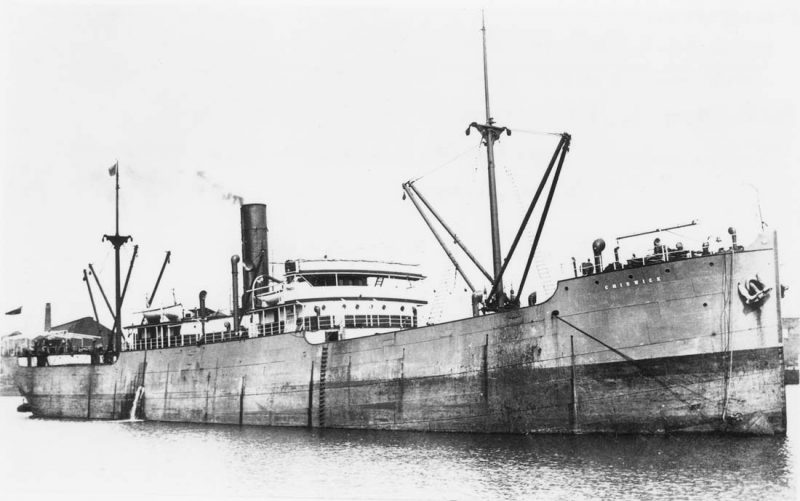
In 1879, William Milburn and Edmund Hannay Watts parted company, with the Watts ships then being registered under Watts, Ward and Company, which then traded worldwide. By the early 1880s, the coastal coal trade was controlled from Newcastle and deep sea tramping from London. A fleet of over a dozen tramps had been registered under this company when on 8th December 1884 the Britain Steamship Co. Ltd. was registered in London. Fifteen new tramps of between 3,500dwt and 4,500dwt were then completed by William Gray at West Hartlepool for the new company between 1884 and 1890, with almost all named after London suburbs. More collieries were purchased to provide cargoes for these fifteen steam tramps, as well as for the others under Watts, Ward & Company. Six of these fifteen steam tramps became marine losses e.g. Brentford was wrecked in 1888, and seven of them were sold on for further trading to Japanese owners.
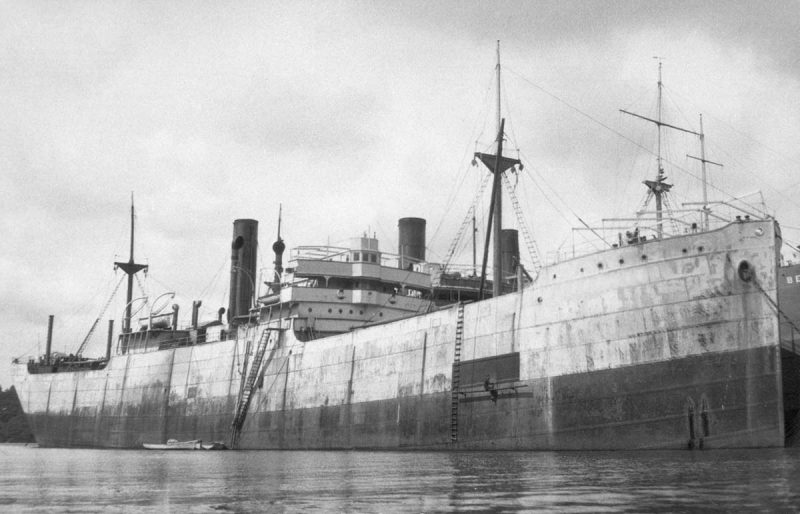
Fourteen steam tramps were owned by Watts, Ward & Company in July 1891 when Dunholme was sunk by collision off Dover while on a voyage from Antwerp to Rio de Janeiro. In 1893, three large tramps named Dulwich, Kilburn and Woolwich were completed by Ropner and Son at Stockton, but in 1894 Highbury was ashore near Alexandria while on a voyage from Newport with coal and coke and became a total loss. In that year, Anerley and Finsbury were transferred from the management company to the new Britain Steamship Co. Ltd., with Finsbury carrying the first cargo of American cotton up the new Manchester Ship Canal. In 1896, Mr. Ward died and the management company was renamed as Watts, Watts & Company.
Twenty two tramps were registered under the new company in 1899 when Wandsworth was wrecked at the Spanish Battery at Tynemouth while inward bound from Benisaf with iron ore for Jarrow. During the Boer War, Edmund H. Watts secured a Government contract to carry hay from England and South America to South Africa. He had four new tramps recently delivered by Ropner and Son, and he then ordered five larger tramps of 7,000dwt for delivery in 1901/02 as Tottenham, Beckenham, Epsom, Ilford and Ascot, with the first three named from Ropner and Ascot being the first Clyde built tramp. Twickenham of 6,500dwt was chartered from Furness, Withy & Co. Ltd. in 1902 to fulfil commitments at this busy time.
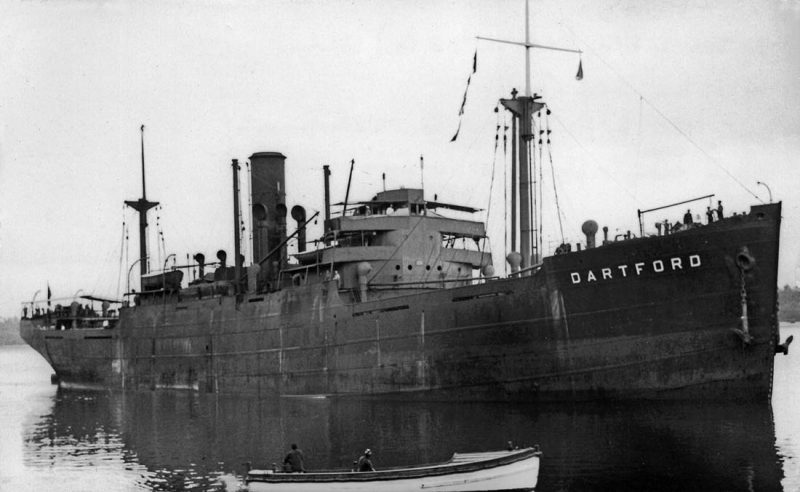
This quintet were the last completed while Edmund H. Watts was in control, for he died in 1902, his name living on in the Watts Naval Training School in Norfolk, part of a large estate he purchased and presented to Dr. Barnardo for use as a training centre for boys who wished to make the sea their career.
F. Shadforth Watts, his son, succeeded him and he concentrated on the American trade, setting up the Pensacola Trading Co. Ltd. in Texas to charter ships for a service from the U.K. and Continent to American Gulf ports as well as in Mexico and the Caribbean. The engines aft tramp August Belmont and the engines ‘midships tramp E. O. Saltmarsh were built for this company and managed by Watts, Watts and Company, and in 1908 a new service was inaugurated between Seattle and Prince Rupert (BC). Maritime losses continued with:-
- Woolwich sunk on 25th February 1903 off Maasluis after a collision
- Finsbury sailed from Kobe on 22nd September 1903 and disappeared
- Anerley wrecked on 1st August 1904 twenty miles from Pusan, Korea
- Chatham sunk in the Suez Canal on 5th September 1905 having failed to extinguish a fire in her cargo
- Hounslow wrecked in April 1906 on the Costa Rican coast on a voyage from Esquimalt
- Windsor wrecked on 2nd February 1908 on Pelsart Reef, Western Australia while on a voyage from Fremantle to Hong Kong with sandalwood, five crew lost
- Kilburn wrecked on 19th May 1910 on Ethel Reef, Fiji while on a voyage from Newcastle (NSW) to Guaymas
- Tottenham wrecked in February 1911 off Juan de Nova Island in the Mozambique Channel
In 1904, Beckenham sailed non-stop from the U.K. to Japan with a dangerous cargo of 300 tonnes of cordite, nitroglycerine and picric acid, steaming 16,000 miles to avoid the Suez Canal and shipping lanes. A number of second hand tramps were purchased from 1905 onwards, enabling seven of the older tramps to be sold to Japan. In 1905, the company acted as agents for the purchase and immediate resale of tramps to Japanese owners. Five tramps with American names were acquired from the Mediterranean and New York Steamship Co. Ltd. for resale to Japan, although Powhatan was traded for a few years. The fleet was 22 tramps strong in 1908 when Chiswick carried cable to Australia for laying between Victoria and Tasmania. At this time, a French associate company, Societe d’Importation de Charbons, was established in Nantes, St. Nazaire and Tours. In 1912, Watts, Watts and Company was made into a limited liability company, and the few remaining vessels under it transferred to the Britain Steamship Co. Ltd.
Five new tramps of 7,000dwt were completed for the company in 1911/12 as Isleworth, Blackheath, Twickenham, Highbury and Finchley with the first three tramps coming from the Stockton yard of Ropner and Son. Isleworth was wrecked almost immediately on Chebucto Head on the eastern seaboard of Canada while on passage from Boston to Louiseburg in March 1912. A casualty at this time was Woolwich (2) on 23rd February 1911 after a collision in the Tyne and she was beached on the south side of the river and repaired.
World War I
At the outbreak of war, the Watts, Watts fleet was 22 tramps strong, but fourteen were to be lost to enemy action, including five purchased during the war with the tragic loss of 110 lives. One ship became a casualty in addition:-
- Dulwich lost on 15th February 1915 27 miles NNE of Cape La Heve
- Richmond lost on 1st July 1915 54 miles SSW of the Wolf Rock
- Finchley wrecked on 20th August 1915 on Kuvskin Island, North Russia
- Woolwich lost on 3rd November 1915 104 miles south of Cape Sidero, Crete
- Tottenham lost on 4th August 1916 33 miles WSW of Marseille
- Lewisham lost on 26th April 1917 in the North Atlantic, 24 lost, 3 taken prisoner
- Highbury lost in May 1917 while on a voyage from Halifax to Birkenhead with nitrate
- Taplow sailed from Huelva on 5th June 1917 with iron ore and disappeared
- Molesey lost on 1st December 1917 when twelve miles WSW of Brighton
- Greenwich lost on 5th December 1917 nine miles south of Planier Island, South France
- Henley lost on 10th April 1918 when 25 miles SW of The Lizard, six lost
- Isleworth lost on 30th April 1918 when three miles SW of Ventnor, 29 lost
- Sandhurst lost on 6th May 1918 when six miles WNW of Corsewall Point
- Chatham lost on 21st May 1918 when eighty miles south west of Cape Matapan
- Aldershot lost on 23rd September 1918 when five miles ESE of Dartmouth
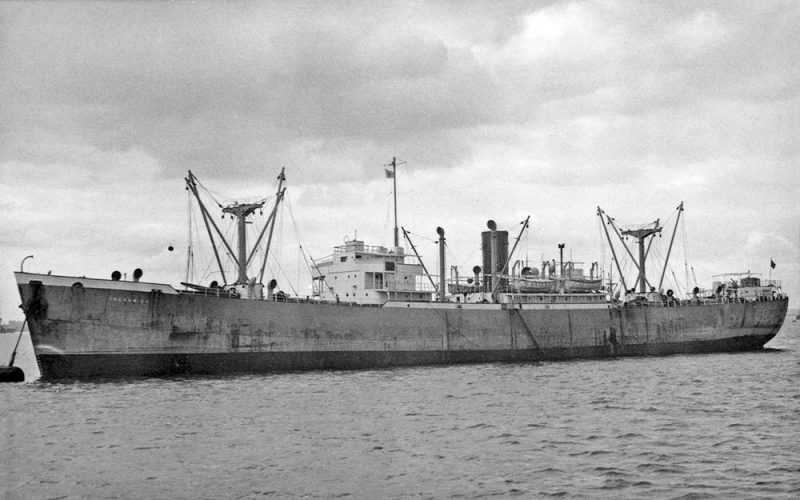
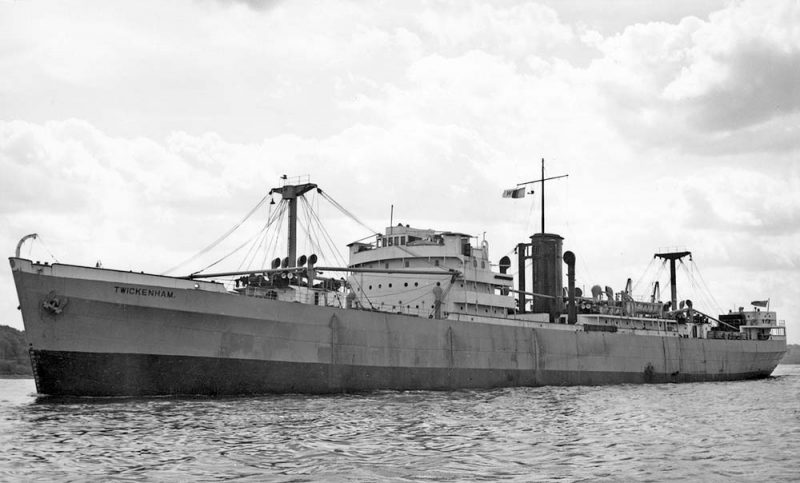
The standard tramps War Stag and War Gazelle were managed during 1918/1919 for the British Government, as well as Augsburg 8,047/1915 during 1919/1920, completed for Norddeutscher Lloyd, but handed to the U.K. as a war reparations ship from Germany, and sold on to the Hain Steamship Co. Ltd. and renamed Tremere. More second hand tramps were purchased to replace the losses and to participate in the post-war boom, and by 1920 the fleet was back to the 1914 level, with Ascot of 1902, Beckenham of 1901, Blackheath of 1911, Chatham of 1902, Chertsey of 1900, Chiswick of 1896, Datchet of 1898, Epsom of 1902, Finchley of 1892, Greenwich of 1904, Hampstead of 1896, Hounslow of 1899, Ilford of 1901, Molesey of 1899, Mortlake of 1898, Petersham of 1898, Putney of 1899, Twickenham of 1912 and Willesden of 1905. These tramps traded worldwide, carrying between 6,000 and 9,000 tons of a wide assortment of bulk cargoes across the oceans of the world to all of the ports of the five continents of the world.
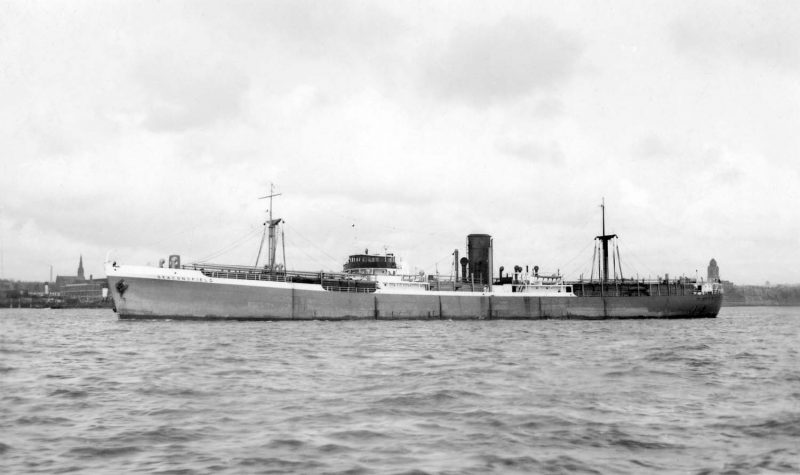
All photos from the John B. Hill Collection
Inter-War Tramping
One of these purchased tramps was Hounslow, purchased as Barton from Webster and Barrowclough of West Hartlepool. She was a half trunk decker with a hull similar to a ‘Turret’ hull, and she sailed on a two year voyage in 1920 from the Tees:-
Tees (ballast), Baltimore (coal), Alexandria, Suez (manganese ore), Dunkirk, Cardiff (coal), Perim, Durban (coal), Colombo, Christmas Island (phosphates), Fremantle (sandalwood), Hong Kong, Christmas Island (phosphates), Aden (bunkers), Algiers (bunkers), Dartmouth (bunkers), Stockholm, Cardiff.
At Christmas Island in the Indian Ocean the sea is close inshore to the jetty, and Hounslow had an anchor and ninety fathoms of chain ready when she made her approach. When the flukes of the anchor touched the rock shelf at the beginning of the shallow water, coir rope springs were run ashore from the bow and to a buoy from astern. Unless the weather was fine, vessels put to sea each evening after phosphate loading was completed, and sea watches were maintained during loading. Hounslow took the phosphates to Fremantle and then loaded up with a cargo of fine sandalwood to Bangkok to pick up a cargo of rice for Hong Kong. The weeds and barnacles on the bottom of her hull slowed her down and she arrived too late and waited two weeks for further orders. She then ballasted back to Christmas Island to pick up more phosphates, this time for Stockholm. The voyage was very slow and took sixty days, so slow in fact she nearly ran out of fuel a few days from Aden and was reduced to burning wooden cargo battens, spare hatches, wooden casings from the donkey boiler and anything else that could burn. She made two more calls for bunkers at Algiers and Dartmouth before reaching Stockholm.
The vicissitudes of the poor freight markets of the 1920s meant that some of the older tramps had to be sold off and replaced with newer second hand tonnage e.g. Chislehurst purchased in 1928, having already had six previous names before receiving her new name on bow and stern, and became the 42nd tramp to be purchased in ten years. F. Shadforth Watts was knighted in 1926 for his service to the Shipping Federation shortly before his death, but the chair of the company was then vacant for two years before his son Edmund Hannay Watts became Chairman in 1928.

Edmund Hannay Watts set up the Watts Shipping Co. Ltd. on 13th February 1929 with a capital of £104,000, of which all but £500 was held by Watts, Watts & Co. Ltd. Four old tramps Hampstead, Highgate, Winslow and Norbiton were registered under the new company. In 1931, Edmund Watts formed the Alexandria Navigation Co. Ltd. to carry cotton from Egypt to Liverpool and Manchester. This was an extension of a long standing company trade to carry coal for the Egyptian State Railways. Norbiton of 1911 and Chatham of 1910 were transferred to the new company as Star of Alexandria and Star of Cairo with management retained by the company. Later, Star of Ramleh, Star of Egypt, Star of Suez, Star of Luxor, Star of Mex and Star of El Nil were names given to other vessels of this company.
Edmund then ruthlessly sold for scrap almost the entire 39 strong fleet of 1929 during the early years of the Depression. Many tramps went straight from lay-up to the scrapyard or to buyers in Greece, Latvia, Estonia and other countries. Twyford was sold twice during the Depression, the first time to Latvia as the renamed Virona with management retained by the company, and then when the Latvian owner went bankrupt the company repurchased her and traded her for a year before selling her again as Ciltvaira.
The tramps sold during the Depression were Amersham of 1906, Ascot of 1902, Beckenham of 1901, Blackheath of 1911, Chertsey of 1900, Chiswick of 1896, Chatham of 1902, Chesham of 1906, Cookham of 1906, Chislehurst of 1912, Datchet of 1918, Denham of 1906, Egham of 1906, Epsom of 1902, Hampstead of 1906, Highgate of 1901, Hounslow of 1899, Ilford of 1901, Laleham of 1904, Molesey of 1899, Medmenham of 1904, Mortlake of 1904, Newnham of 1901, Putney of 1904, Remenham of 1903, Tottenham of 1906, Twickenham of 1912, Twyford of 1905, Willesden of 1905 (sunk as a breakwater after a grounding), Wokingham of 1906, Woburn of 1905, and Winslow of 1903.
The fleet was down to ten tramps in 1935 with six new ones, three of 9,000dwt built in 1928 by the Caledon yard at Dundee as Wanstead, Watford and Wendover, and three of 6,740dwt from the Tees yard of Smith’s Dock Co. Ltd. in 1930/31 as Dartford, Deptford and Dulwich. This last trio were the first British tramps to be fitted with echosounders. Unfortunately, Watford was wrecked near Glace Bay on Cape Breton Island on 10th September 1932 while she was attempting to reach Sydney (NS) to load coal on a regular run to Montreal. The seas were running very high and pushed the tramp nearer to the rocks, with number two hold breached on the starboard side and seawater poured in. Capt. Penrid knew his ship was doomed, which wore the Dominion Shipping Company of Montreal charter houseflag on her funnel, whose management had been taken over by Watts, Watts and Co. Ltd. in 1928. Watford was replaced by the purchased Willesden, the former Antinous built at Belfast in 1925, which was registered under the Watts Shipping Co. Ltd. A slight improvement in freight rates in 1935 prompted Edmund Hannay Watts to order another trio of tramps of 9,250dwt from the Caledon yard, completed during 1936/38 as Blackheath, Beckenham and Beaconsfield. They had raked stems and cruiser sterns with a tonnage opening aft, and their five holds were served by ten derricks and winches.
World War II
When hostilities started again in September 1939, the company had three ‘B’ class, three ‘D’ class and three ‘W’ class tramps, together with three new ‘T’ class tramps on order from the Caledon yard. There were to be no fewer than ten losses of this fine fleet due to enemy action:-
- Deptford torpedoed and sunk on 13th December 1939 near Honningsvaag while on a voyage from Narvik with 6,000 tons of iron ore, 31 lost.
- Dulwich bombed and sunk on 9th June 1940 after grounding at the mouth of the Seine while on a voyage from Rouen with 3,900 tons of coal.
- Wendover shelled and sunk on 16th July 1940 by the raider Thor off Brazil while on a voyage from the Mersey to Brazil with 8,000 tonnes of coal, 4 lost.
- Tottenham shelled and sunk on 17th June 1941 by raider Atlantis in the South Atlantic while on a voyage from the Tyne to Table Bay and Suez with military stores and general cargo, 17 crew landed at Trinidad, 26 made prisoners of war.
- Teddington torpedoed by E-boat and grounded near Cromer on 17th September 1941 while on a voyage from London to Durban and Calcutta with 9,000 tons of general cargo and nickel.
- Willesden shelled and sunk on 1st April 1942 by the raider Thor in the South Atlantic while on a voyage from New York and St. Thomas to Table Bay and Alexandria with military stores and general cargo, 5 lost, 42 prisoners of war in Japan.
- Dartford torpedoed and sunk on 12th June 1942 while on a voyage from the Tyne and Oban in ballast to Sydney (NS), 30 lost.
- Wanstead torpedoed and sunk on 21st April 1943 to NE of Newfoundland while on a voyage from the Tyne and Oban to New York, 1 lost.
- Ascot torpedoed and sunk on 29th February 1944 by a Japanese submarine in the Indian Ocean while on a voyage from Calcutta and Colombo to Diego Suarez and Mauritius with general cargo including wax, linseed oil, gunnies, pig iron, coconuts and copra. The Japanese machine gunned the lifeboats killing all 46 crew members.
- Blackheath torpedoed and sunk on 10th January 1945 near Gibraltar while on a voyage from Manchester to Augusta and Ancona with military stores. She broke in two a few miles from Cape Spartel and her crew were saved.
- Deptford was carrying iron ore homewards from Narvik when she was torpedoed and sunk, and by June 1940 Dulwich was acting as a supply ship to British forces during the evacuation of the ports of Le Havre and Cherbourg. She grounded near the mouth of the Seine, was bombed and set on fire and beached near Villequier on 9th June, but was later salved and used by the enemy.
- Tottenham was the first of the new ‘T’ class when launched at the Caledon yard at Dundee on 21st March 1940, and she was ready in June with the help of a Government loan of £132,000. She was badly damaged by a mine at Southend Anchorage on 19th March 1941 while waiting in a convoy to sail north to the Tyne and on to Halifax. She arrived in tow at Gravesend the following day and was then repaired on the Tyne. She sailed from there for Suez with military stores via the Cape, but was stopped in the South Atlantic midway between Brazil and Freetown by the raider Atlantis on 17th June 1941 and shelled and sunk. Capt. Woodcock and 29 of his crew were taken prisoner on the raider, but seventeen crew members managed to escape in the blackness of the night and were picked up.
- Twickenham, the second ‘T’ class was launched on 17th September 1940 and was ready in November. She was damaged by a torpedo on 15th July 1943 from U135 near the Canary Islands in convoy OS51, Hull for Buenos Aires. She was taken in tow but later proceeded under her own power for Dakar, arriving on 31st July. She lay there until temporary repairs could be completed and then sailed for home on 21st October 1944 and survived the war.
- Teddington, the third ‘T’ class was launched on 10th January 1941 and was ready in March, but six months later she was torpedoed off Cromer while on a voyage from London to Durban with general and nickel and became a total loss.
- Willesden sailed from the Bush Terminal in New York in March 1942 for Alexandria under Capt. Griffiths and was routed via the West Indies and Freetown. She was stopped by the raider Thor on her second raiding spree south of the equator, her radio aerial having first been snapped by a lead weight tied to a cable slung underneath the raider’s seaplane. A total of 128 shells were fired at the hapless Willesden and her deck cargo of oil drums went up in flames and her bridge and superstructure was destroyed. She sank taking the body of the bosun with her, and six others had been injured.
- Dartford sailed from the Tyne with a cargo of coal at the beginning of June 1942 and then from Oban in outward Atlantic convoy ONS100 of 37 ships. However, she was torpedoed and broke up immediately and only fifteen crew members were quick enough to dive overboard before she went down and they were picked up by a rescue ship although the last man rescued, the Chief Engineer, died as a result of exposure.
- Wanstead of 1928 was torpedoed and sunk in an Atlantic convoy on 21st April 1943 to the north east of Newfoundland.
New tramps were ordered by the company to plug the gaps, with Ascot launched in 1942 at the Caledon yard, followed by Greenwich launched by Countess Harwood at Doxfords, and Chertsey and Chiswick at Pickersgill in 1943. Six standard war-built tramps of 10,000dwt were managed for the Ministry of War Transport during 1942/1945, including Ocean Messenger 7,129/1942. Three French ships were also managed in Beaumanoir 2,300/20, Duquesne 6,300/1919 and Medee 1,900/1920, as well as the American built West Gambo 5,600/1918.
Ascot was torpedoed and sunk by a Japanese submarine while on a voyage from Calcutta and Colombo to Diego Suarez and Mauritius on 29th February 1944 and 39 crew and seven gunners were lost. After the vessel was abandoned, the Japanese submarine returned to ram and machine gun the lifeboats and men in the water in an outrageous act of barbarity. The last loss of a bitter war was Blackheath when torpedoed and sunk by the enemy U870 as she approached Gibraltar on 10th January 1945.
Post War Trading
The company was left with the surviving Beckenham, Beaconsfield and Twickenham after the fitting of a new bow, together with the war built motor tramp Greenwich, and the steam tramps Chertsey and Chiswick. New tonnage was needed in October 1946 to inaugurate the new Watts, Watts Line service between the East Coast of the U.K. and Continent. Two ‘Empire’ tramps of 10,000dwt were purchased and renamed Epsom and Willesden and traded to the St. Lawrence with the other six tramps. Chertsey was sold to P. D. Hendry of Glasgow in 1947, and Epsom in 1950 to Court Line, while Chiswick lasted on the service until sold to Germany in 1952. She had been seriously damaged in a stranding in the St. Lawrence on 23rd June 1950, but refloated on the next high tide and proceeded to Montreal for repairs.
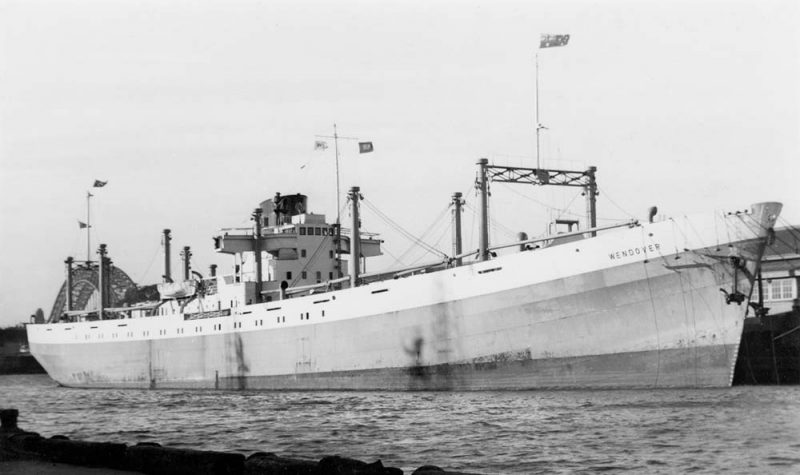
My uncle George Watson also survived the war after serving in the Atlantic convoys in Watts, Watts tramps, and had also served during the Depression days on Court Line tramps. He always regaled me of stories of walking across the Tyne at its narrowest point on the decks of the many Court Line tramps laid up next to each other. After the war, he came ashore to become the manager of a Hastings seafront pub, and invited me several times to stay in his high top floor penthouse apartment reached by no less than one hundred steps with no lifts. The view of outward bound ‘W’ class Watts, Watts ships sailing to Canada and other British tramps, cargo-liners and tankers in the outward lane just after passing Dungeness Light and Fairlight Cliff was spectacular, and gave me an appreciation of the many British shipping companies of the 1950s and 1960s.
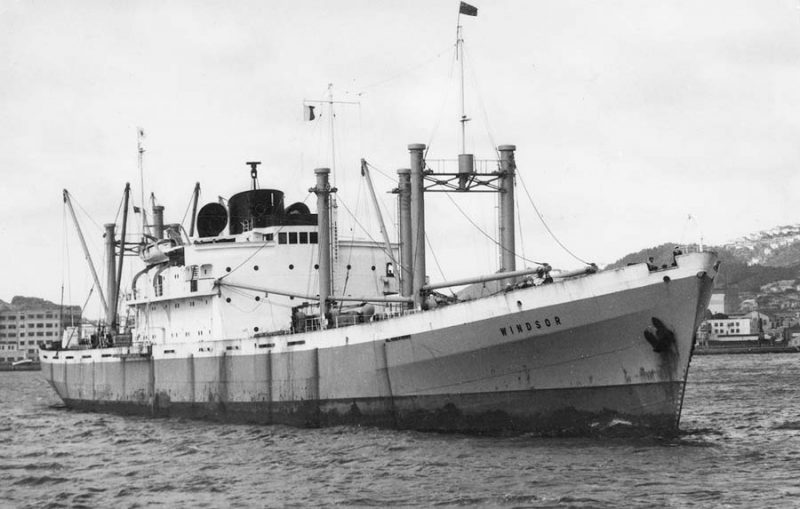
The motor tramp Wanstead of 8,500dwt was launched in 1949 at the Caledon yard at Dundee, and was followed by her sisters Wendover and Woodford in 1950. They had the best designed crew accommodation of all British tramps of the time, and were built as open shelterdeckers trading between Antwerp and Canada and were strengthened for ice. They were fitted with the first Watts, Watts pronounced hull knuckles to the design of the Chairman, Edmund Hannay Watts, who was a qualified naval architect. This consisted of a bulge in the sheerstrake on both sides of the tramp at the bow and the stern, but left only a small amount of plating to paint up their names and port of registry at their stern. This improved heavy weather behaviour by increasing the buoyancy, and they had other innovations including sliding steel covers on the hatchways, and watertight double doors fitted in the side of the hull in the lower ‘tween decks for carrying cars. They were equipped with twenty derricks on two goalpost masts and four sets of posts.
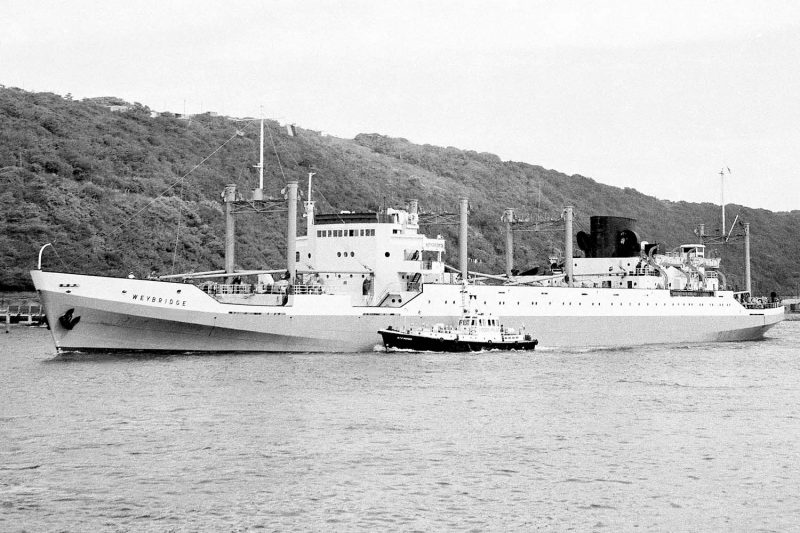
The similar but larger Windsor of 10,044dwt was launched by the Princess Royal on 23rd May 1951 at the Whiteinch yard of Barclay, Curle & Co. Ltd., and her sisters Wokingham and Woolwich followed from the Caledon yard during 1953/1955. The profile of Weybridge of 10,375dwt in 1958 resembled a cargo-liner with her very long extended superstructure and many portholes. She was powered by a two stroke six cylinder Doxford oil engine, with her engines and funnel in the ‘three quarters aft’ position. The crew were given excellent single cabin accommodation in the ‘tween decks, and she had four sets of goalpost masts for her ten and twenty tonne derricks. She reached seventeen knots on trials on the Arran measured mile and was, in the opinion of most experts and pundits, the finest tramp in the world on her delivery. Edmund Hannay Watts travelled on her maiden voyage from Antwerp to St. John (NB) in very rough Atlantic weather, and was well pleased with her steadiness. Weybridge next voyaged to Vizagapatnam and Calcutta to load wheat. Sister Wimbledon followed later in 1958 and was chartered to Port Line from 1960 to 1965 for Australasian trading and then sold to Pakistan in 1967. The very similar Willesden of 1961 traded for only a year before her sale to Bulgarian owners.
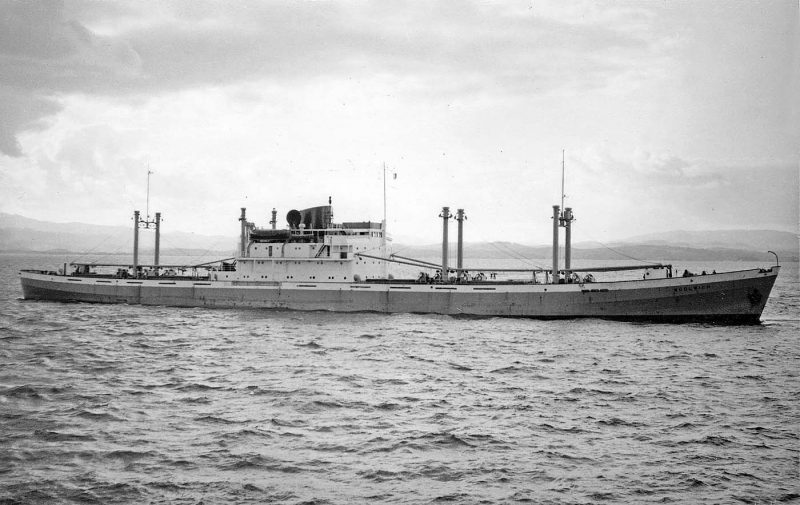
The ‘W’ class sailed from London regularly to Canada, or from Mediterranean ports to Canada. Weybridge made a year long voyage in 1960 from London to Durban, East African ports, San Diego, Los Angeles, Vancouver, Escondido (Mexico) to load cotton for Japanese ports with a quick dry-dock in Kure, then ballasted to Gladstone (Queensland) to load sugar for Liverpool calling at Djakarta on the way. She spent the last two years of her Watts, Watts career during 1965/67 sailing from London to Montreal, Durban to load sugar for Japanese ports, and was then chartered for two years to ‘K’ Line for Pacific trading to U.S.A. and Canadian West Coast ports, Central American ports, and made her last voyage from the Caribbean to Marseille, where she was handed over to Pakistani owners and was renamed Karotua.
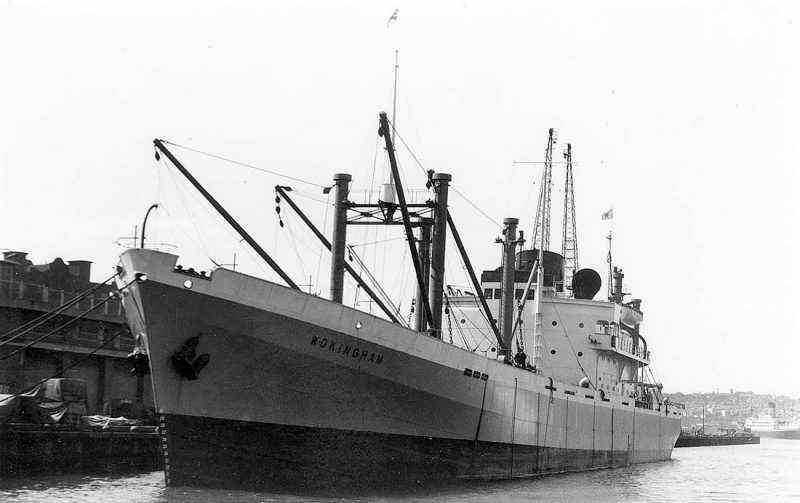
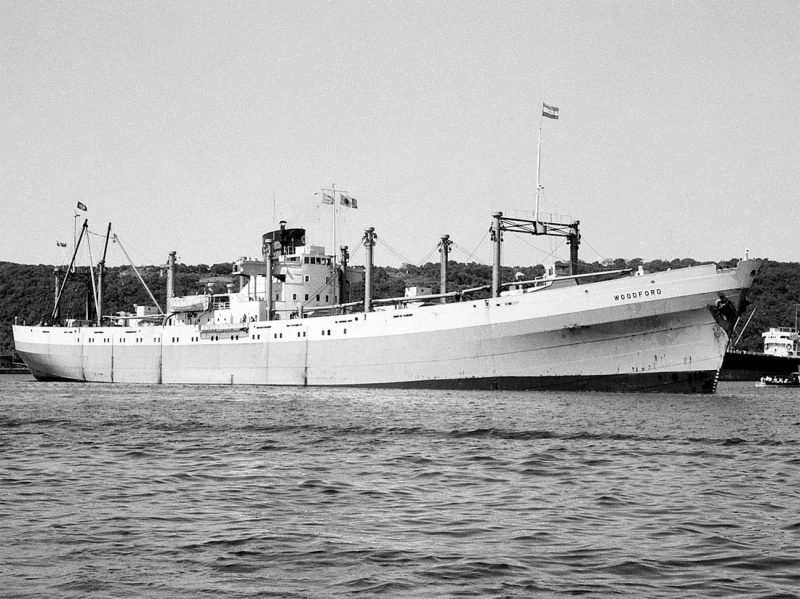
These very superior tramps were in great demand from British liner companies, with Weybridge taken on a one year charter in 1964 to Lamport and Holt as Rossetti and then sold to Pakistan in 1967. The smaller cargo-liner Sycamore 3,343/1950 was taken on charter during 1955/57 from Johnston Warren Line’s Mediterranean service and renamed Walsingham. Edmund Hannay Watts died in 1962 and these great ships were gradually sold off. In 1965, the company was admitted to the Seabridge consortium and an order for a Panamax dry bulker of 75,000dwt was placed with Lithgows for delivery in March 1968. Weybridge and Wimbledon had been the last company tramps when sold in 1967, and later in 1968 an offer by Bibby Line of Liverpool for the Britain Steamship Co. Ltd. was accepted. The management company of Watts, Watts & Co. Ltd. was also sold off in 1968 to an insurance company. The last three ‘W’ class tramps, Weybridge, Wimbledon and Willesden were scrapped during 1982/83.
Postscript
The Panamax bulker was completed as Westminster Bridge at the Port Glasgow yard of Lithgows, and during her very brief career for Watts, Watts had the company houseflag painted up on her black funnel. The nine new ‘W’ class post World War II high standard tramps were always mentioned for their excellent and outstanding crew accommodation to help and persuade young men to join the Merchant Navy as cadets and then continue to sail on British ships throughout their careers. Not that many of them needed persuading, with the delights of hundreds of ports to be visited and enjoyed by the crews of British tramps in every corner of the world more than enough of an attraction.
The company diversified in the 1960s into two further strands of shipping, with five coasters of around 1,700dwt acquired in 1965 from Queenship Navigation Ltd., formerly British Channel Traders Ltd., and other owners. Putney was the former Rambler Rose completed in July 1954, while Mortlake was the former Windsorbrook of 1958, and Sandringham Queen of 1955, Osborne Queen of 1957, and Richmond Queen, the former Somerset Coast of 1958, kept their names with management passed to Comben Longstaff & Co. Ltd. of London. Nine supertankers of 25,000dwt to 32,000dwt were also managed from 1958 for the Gulf Oil Corporation of New York British flag subsidiaries of Britama Tankers Ltd. and Afran Bahamas Ltd. in Ahmadi, Burgan, Ceuta, Coro, Magwa, Melika, Ragusa, Raudhatain and Suhail built during 1951/57, plus four built by the Haverton Hill shipyard on the Tees between 1961 and 1963 as Gulf Briton, Gulf Dane, Gulf Finn and Gulf Scot of 43,040dwt. J. & J. Denholm took over the management of these tankers after Watts, Watts and Co. Ltd. was sold off in 1968.
The Watts family had owned and managed a huge fleet of over 250 very interesting and useful British ships during their magnificent and very long period of shipowning.

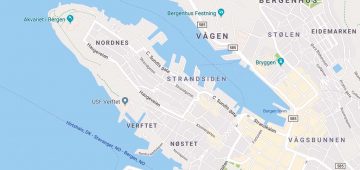



Comments
Sorry, comments are closed for this item